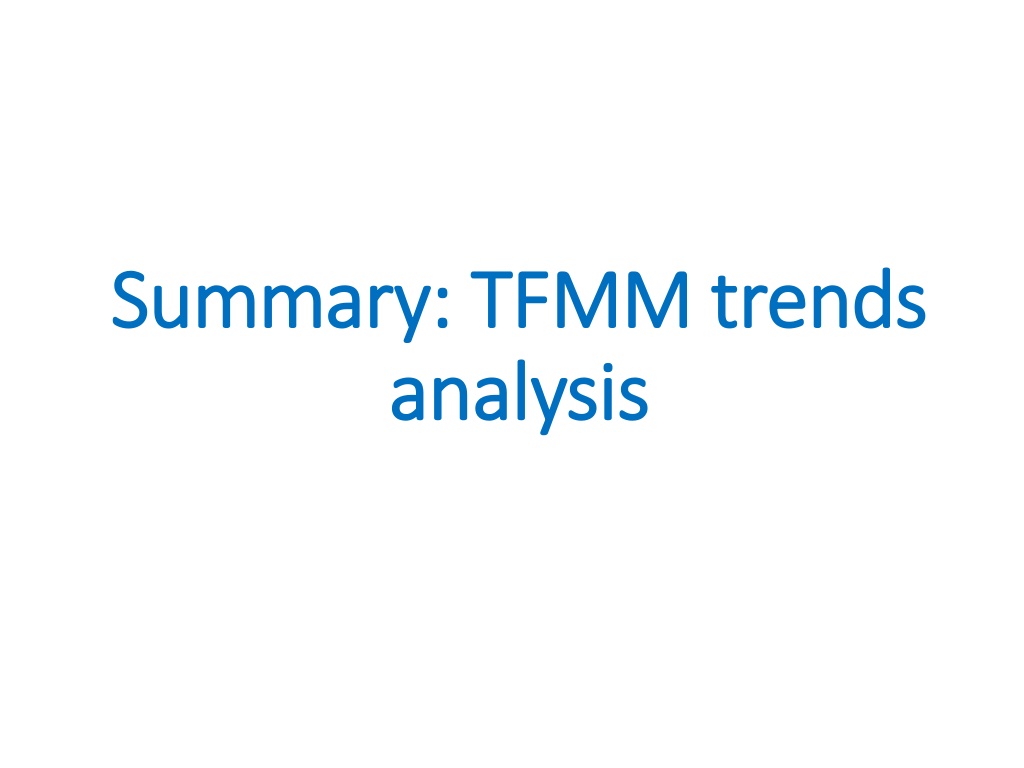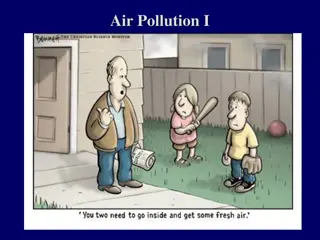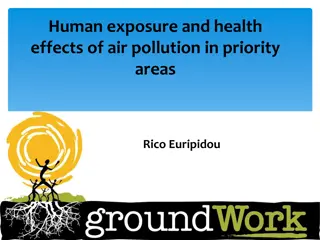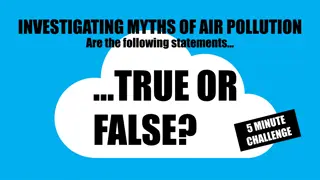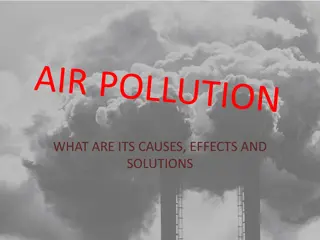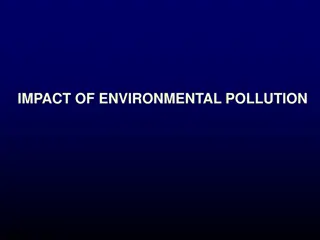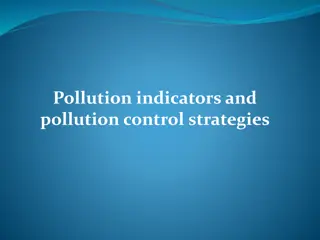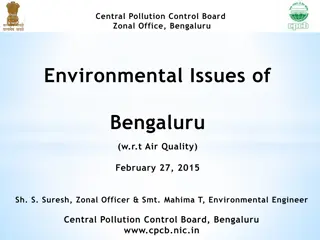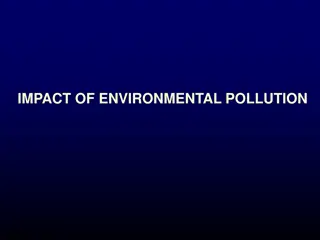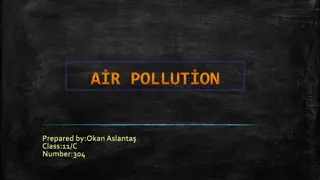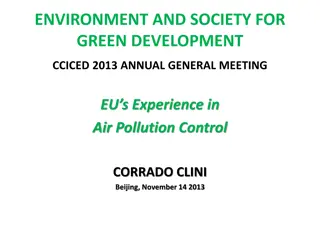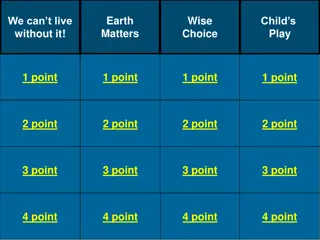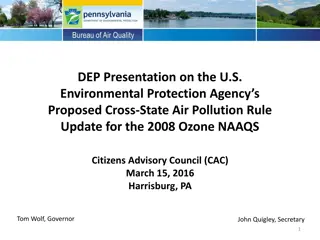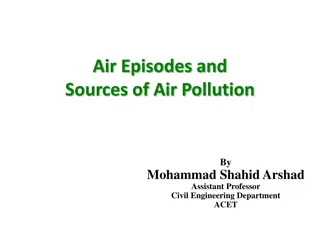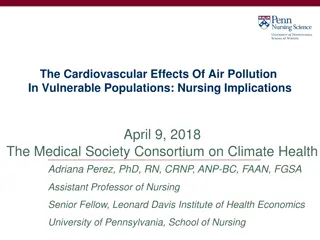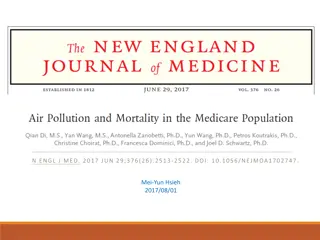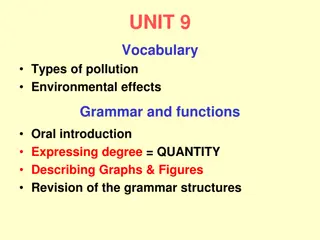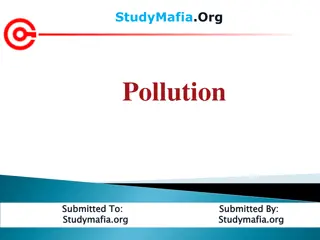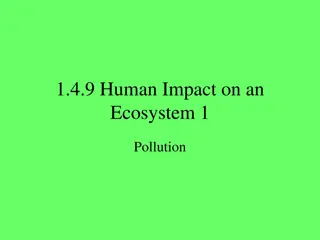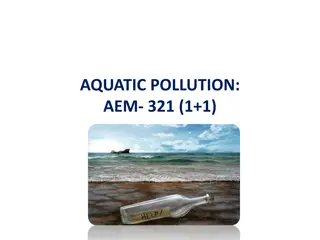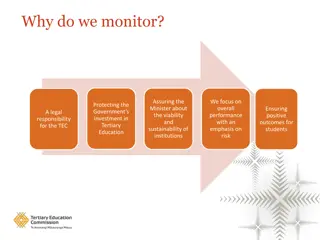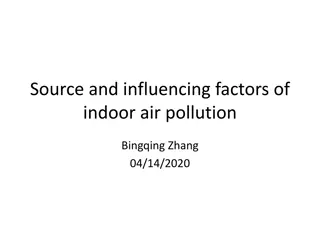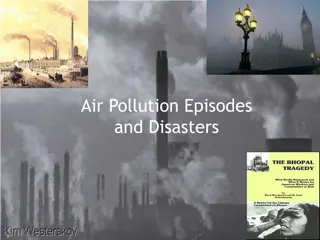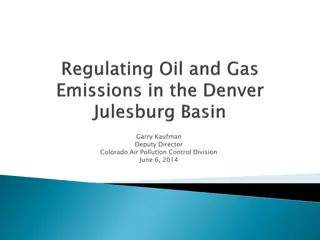Trends Analysis in Air Pollution Monitoring and Assessment
Trends analysis in air pollution monitoring and assessment involves studying variables recommended for measurements at different EMEP stations, focusing on photo-oxidants, particulate matter, heavy metals, and more. The period and time granularity, data filtering methods, and the importance of data quality assessment are crucial aspects of this analysis.
Download Presentation

Please find below an Image/Link to download the presentation.
The content on the website is provided AS IS for your information and personal use only. It may not be sold, licensed, or shared on other websites without obtaining consent from the author. Download presentation by click this link. If you encounter any issues during the download, it is possible that the publisher has removed the file from their server.
E N D
Presentation Transcript
Summary: TFMM trends Summary: TFMM trends analysis analysis
AQ trends report : AQ trends report : what what for for Support to air pollution decision makers involved in the CLRTAP : lessons learnt for 20 years Contribution to the future CLRTAP assessment report A synthesis of input, data, information produces by the EMEP centers and by national experts For the first time gathering observed and modelled AP trends Assessment of the efficiency of the emission reduction strategies adopted with the protocols Evaluation of trends in long range fluxes Better understanding of the air pollution patterns in Europe including links with the local scale Discrimination between contributions from anthropogenic and natural sources Mapped information thanks to modelling
1) Variables 1) Variables Variables recommended for measurements at EMEP level 1 stations: - photo-oxidants (O3, NOx, CO, VOCs) - Particulate matter (PM) - Heavy metals and POPs - Deposition Variables recommended for measurements at EMEP level 2 stations - Aerosol chemical composition Focus on those that are relevant to assess the impact of the protocols EMEP monitoring strategy list makes sense but too large and sometimes too difficult for policy makers Some compounds are already well-known (e.g. sulfur compounds) or are less relevant (CO) Ozone, NOx PM10, PM2.5, sulfur and nitrogen deposition, information on chemical composition should help in the interpretation Other ? Ammonia ?
2) Period and time granularity 2) Period and time granularity Periods: 1992-2012 And 2002 2012 NOTE: this is not the best choice as 2003 is close to the beginning of the second period and can impact substantiality the trend estimate Data sets resolution Daily, monthly, annual
3) Data filtering prior to analysis 3) Data filtering prior to analysis Check for completeness (do we fill in missing values?) NO meteorological adjustment Outliers? Split data set into day / night values (based on hourly values, possible only for high resolution data) Split data set into transport sectors (in what temporal resolution? Hourly? Daily?) Martin Schultz to find out about new meteorology Probably only monthly means can be calculated for filtered data set Question: how to assess the quality of the data sets at this step?
4) Analytical technique 4) Analytical technique Use monthly and annual means for trend analysis Check if there is a trend in the data set (Mann-Kendall? First derivative? Any other method?) Check if trend is linear If yes, use Sen s slope estimate with uncertainty at 95% confidence level If trend is not liner, use MSC-East piece of software Question: how will we compare linear and non linear trend estimates for the same variable?
5) Analysis of results 5) Analysis of results A lot of data -> need clustering How to compare the outcome with models? Interpretation!!!!!
First decisions for the work plan First decisions for the work plan Statistical analysis tools for observations -> note to be published by the EMEP centers Tools for analysis available from the centers The set of stations for observed trends should be defined with national experts : First set from the EMEP and scientific networks (with 20 years time series, QA/QC principles checked ) This list should be completed for each country by national experts, including urban sites if they are considered as relevant The final set of stations is validated by the national experts Modelling work will be mainly supported by EURODELTA and by the current projects from the EMEP-centers Wiki-page proposed and maintained by MSC-West for exchange of information ACP special issue
